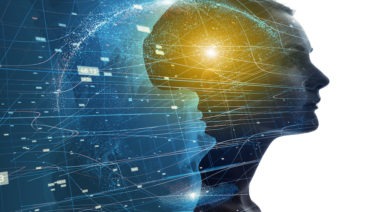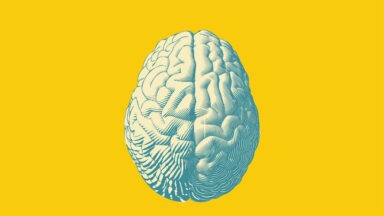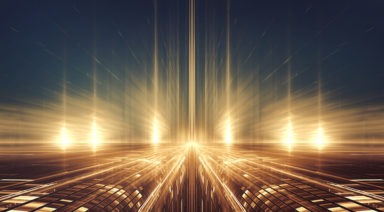Study Shows Consciousness May Be Product of Quantum Effect

A controversial theory on consciousness has just been tested: Could consciousness be explained by quantum effects in the brain?
A 30-year-old theory on consciousness called, “Orchestrated Objective Reduction,” posits that consciousness could live in tiny microtubules in the brain, or as New Scientist explains, “Brain microtubules are the place where gravitational instabilities in the structure of space-time break the delicate quantum superposition between particles, and this gives rise to consciousness.”
The theory was first introduced in the 1990s by physicist Roger Penrose and anesthesiologist Stuart Hameroff, but was believed to be untestable and was therefore regarded as a fringe theory at best.
But now, New Scientist reports the theory has just passed a key test, writing, “Experiments show that anesthetic drugs reduce how long tiny structures found in brain cells can sustain suspected quantum excitations. As an anesthetic switches consciousness on and off, the results may implicate these structures, called microtubules, as a nexus of our conscious experience.”
In one experiment Jack Tuszynski at the University of Alberta shone blue light on microtubules, the hollow skeletal structure inside plant and animal cells, to see how they react. The light was caught in the microtubules and then re-emitted in a process called “delayed luminescence,” which they say is comparable to how the human brain processes information. and, they argue, could explain the fundamental workings of the brain and consciousness.
The second part of the experiment was to repeat it but in the presence of an anesthetic. The anesthetic suppressed the delayed luminescence in the microtubules, meaning the light was re-emitted faster after the anesthetic shut down the microtubule. So what does it all mean? Tuszynski believes that turning consciousness on and off via microtubules could be the beginning of our consciousness.
However, Fred Alan Wolf, physicist, lecturer, and author of “Taking the Quantum Leap” is skeptical about the role of microtubules.
“Somehow we don’t feel microtubules are the final answer, if at all the answer,” Wolf said. “Maybe it’s the mission of the light that has something to do with consciousness, and maybe we’re knocking out the microtubules by putting anesthesia onto them. So, that was the hypothesis, the guess, the tying together of the timing of the emission of re-emitted light to anesthesia to consciousness. So, eh, how would you prove it? It’s an interesting concept. Who knows whether it’s right or not — I doubt whether it’s right, it’s too simple.”
As someone who has studied consciousness for decades, what do you think is the answer?
“What consciousness is, is very difficult to say,” Wolf said. “A better line of research would be to try to determine what consciousness does. Can we actually point to things that are happening that we can attribute to consciousness itself?”
Much more testing is needed on the microtubule hypothesis, even Tuszynski himself told New Scientist, “We’re not at the level of interpreting this physiologically, saying ‘Yeah, this is where consciousness begins’, but it may.”
Animals and Universal Consciousness

More often than I like to admit, I’m forced to realize that some people are simply a lot smarter than I am – doggone it. At other times, I catch myself in one of those moments of spontaneous prideful arrogance, thinking how much smarter I am than somebody else.
It’s easy for me to see that there are lots of people smarter than I am, and maybe a few who aren’t. I think, therefore I think I know what intelligence is – but that intelligence has let me down many times in the past, as it has for even “the greatest minds of their times” – former members of The Flat Earth Society and all.
For much of my life I thought that, at least, I was smarter than an animal – an assumption taken for granted in our modern, technological culture. Now, I think that assumption was wrong. I think animals are smarter than all of us, and it all has to do with the arrogant, typically human way I think about what intelligence is.
My intelligence seems to be a function of how well my senses and capabilities work, especially in terms of feeling “successful” about my life; but what if I could hear, see, or smell, thousands of times better than I can? What kind of world would I perceive, and how much more would I know about it? What if I didn’t have to worry about wearing clothes (believe me, I do), or whether I had a roof over my head? What if the supermarket were closed, or I was dropped in the middle of the ocean or the woods – could I feed myself, or would I end up becoming somebody’s dinner? Suddenly, I don’t sound much like ‘the top of the food chain.’
“Stay calm. Share your bananas.”—Koko the Gorilla
Profound Consciousness in Animals
One of the most difficult barriers for people to break is the one that prevents us from perceiving the profound levels of consciousness alive in our animal relatives. This kind of prison of the human ego that demands we place ourselves above all other creatures is possibly the most soul-depleting (and destructive) obstacle to human spiritual evolution there is, forcing us to live life through the limited filter of human sensory experience, generally misinterpreted by our collective and personal ego, and the delusions of “intellect.” As a result, we tend to destroy our home and hurt those from whom we could learn the most.




































